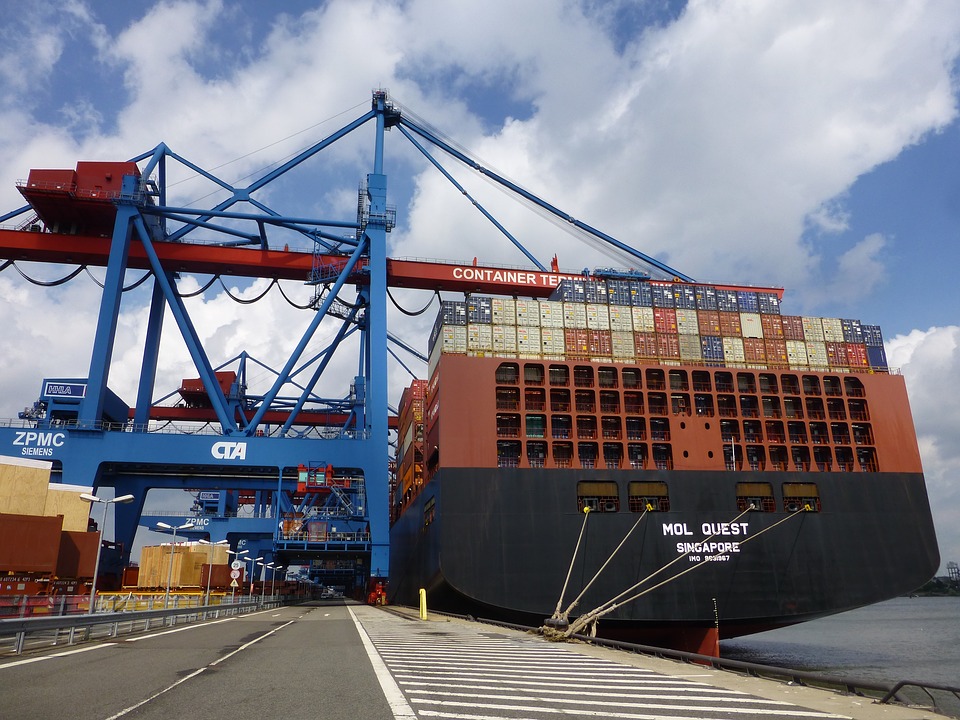
Can you imagine that Europe’s largest seaport handles over 12.6 million containers a year? As it turns out, that’s nothing compared to the capacity of those in Asia – check it out!
We will start this article with a definition of a transshipment terminal. This is a facility, often a really large area, where there is reloading of goods from different modes of transport. The best example of this is transshipment between marine vehicles, or container ships. Marine terminals are usually part of an entire port, located at the coastal cities. They are famous for their incredible efficiency counted in millions of containers transshipped per year, this is called TEU.
In our top 5 could not miss a terminal from Poland, there is also one from Europe. The first three are of course ports from Asia – that is where the most efficient terminals with the largest areas are located.
Located in the seaport of Gdansk, the terminal was opened in 2007 and in 2014 the handling capacity reached 1.5 million TEU. It is the largest and also the most modern terminal in our country. Only transoceanic container ships from China arrive here. What is more, it is the largest single terminal on the Baltic Sea! It was created for the needs of deep-sea, transoceanic container ships. Prior to its establishment, Denmark unloaded these types of sea vessels into smaller (feeders) that entered the previous port, which significantly reduced the number of containers received annually.
The largest and the most important seaport in Europe. Its area is 105 square kilometers, for comparison, Poznan has a little over 260 square kilometers. One port is almost half of Poznan – impressive! Interestingly, since the 1960s until almost 1986 it was the most important seaport in the world. Later it was taken over by the port in Singapore, then in Shanghai. It handles all kinds of goods. In 2016, it handled 12.6 million containers – almost 11 times more than the port of Gdansk. The maximum depth in this port is 24 meters, so Rotterdam can receive all the largest ships in the world.
Situated next to Hong Kong, Shenzen in Guandong province (in China, of course) increases its capacity every year when it comes to container handling. It is actually a collective of huge terminals such as Chiwan, Yantian and Shekou. Geographically, it is an area with a coastline measuring 260 kilometers. The port offers a capacity of 195 million tons per year, which is almost 19 million TEUs each year. Interestingly, as we have already mentioned, this volume is gradually increasing. Soon it will probably exceed the magic limit of 20 million TEU.
Considered as the second largest seaport in the world, also the second in Asia. It is second only to number one in our ranking. The port is located at the southern tip of the Malay Peninsula, in Singapore. Here the capacity is split between two major container terminals and several smaller ones, the largest being: PSA Corporation Limited and Jurong Port. They enable the transportation of goods to nearly 600 other ports around the world in exactly 123 countries. Every year, the Port of Singapore increases its capacity, as in 2013 it was 13.2 million TEUs and in 2018 it is already 33.7 million TEUs! Is it impressive? Check out the first place!
For over a decade now, it has led the way when it comes to the collective of the largest and most efficient cargo terminals in the world. Here, the port was not immediately divided into terminals, but into smaller ports, which in turn were divided into terminals – something incredible! The most important of all is the port of Yangsan, located on an island that is connected to the mainland by a 32.5 kilometer long bridge. In 2010, the Port of Shanghai surpassed the Port of Singapore by “only” 500 thousand TEU. In later years, the gap was much more pronounced. In 2017, the capacity exceeded 40 million TEU